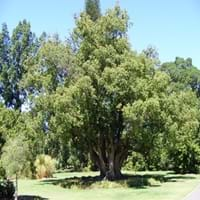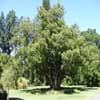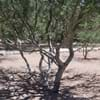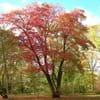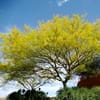Life Span
Perennial
Annual and Perennial
Type
Tree
Bulb or Corm or Tuber
Origin
India, China
Latin America and the Caribbean, Central America, Micronesia
Types
Bead tree
Hannah Yams, Japanese Sweet Potatoes
Number of Varieties
Not Available
Habitat
Forest margins, Roadsides
Cold Regions, Tropical regions
USDA Hardiness Zone
8-15
11-12
Sunset Zone
H1, H2, 6, 7, 8, 9, 10, 11, 12, 13, 14, 15, 16, 17, 18, 19, 20, 21, 22, 23, 24
21,22
Habit
Oval or Rounded
Vining/Climbing
Minimum Width
Not Available
Flower Color
Lavender
Not Available
Flower Color Modifier
Bicolor
Bicolor
Fruit Color
Yellow
Not Available
Leaf Color in Spring
Green, Dark Green
Green, Purple, Light Green, Chartreuse, Bronze
Leaf Color in Summer
Dark Green
Light Green
Leaf Color in Fall
Dark Green
Several shades of Green
Leaf Color in Winter
Dark Green
Light Green
Leaf Shape
Pinnate
Heart-shaped
Plant Season
Spring, Summer, Fall, Winter
Spring, Summer, Fall, Winter
Sunlight
Full Sun, Partial Sun, Partial shade
Full Sun, Partial Sun
Growth Rate
Fast
Very Fast
Type of Soil
Clay, Loam, Sand
Clay, Loam, Sand
The pH of Soil
Acidic, Neutral, Alkaline
Acidic, Neutral, Alkaline
Soil Drainage
Average
Well drained
Bloom Time
Early Spring, Spring, Late Spring
Late Fall, Early Winter, Winter
Tolerances
Cold climate, Drought, Pollution, Soil Compaction, Variety of soil types
Drought
Where to Plant?
Ground
Ground, Pot
How to Plant?
Rooted stem cutting, Seedlings, Stem Planting
Stem Cutting, Tuber propagation
Plant Maintenance
Low
Medium
Watering Requirements
Average Water Needs, Medium, Requires regular watering, Requires watering in the growing season, Water daily during growing season, Water less during winter
Average Water Needs, Needs a lot of water initially
In Summer
Ample Water
Lots of watering
In Spring
Less Watering
Moderate
In Winter
Less Watering
Average Water
Soil pH
Acidic, Neutral, Alkaline
Acidic, Neutral, Alkaline
Soil Type
Clay, Loam, Sand
Clay, Loam, Sand
Soil Drainage Capacity
Average
Well drained
Sun Exposure
Full Sun, Partial Sun, Partial shade
Full Sun, Partial Sun
Pruning
Prune if you want to improve plant shape, Remove damaged leaves, Remove dead leaves, Remove dead or diseased plant parts, Remove deadheads
Remove damaged leaves, Remove dead branches, Remove dead leaves
Fertilizers
Fertilize every year, fertilize in growing season, Less fertilizing
All-Purpose Liquid Fertilizer
Pests and Diseases
Insects, Red blotch
Aphids, Beetles, Leafminers, Red blotch
Plant Tolerance
Cold climate, Drought, Variety of soil types
Drought
Flower Petal Number
Single
Single
Foliage Texture
Coarse
Coarse
Foliage Sheen
Glossy
Matte
Attracts
Birds, Butterflies
Aphids, Beetles, Mites, white worms
Allergy
Toxic
Abdominal pain, Skin rash, Swelling, Vomiting
Aesthetic Uses
Beautification, Landscape Designing, Showy Purposes
Not Used For Aesthetic Purpose
Beauty Benefits
No Beauty Benefits
Not Available
Environmental Uses
Absorbs greenhouse gases, Absorbs huge amounts of CO2, Air purification, Amazing growth rate, Erosion control, Food for birds, Food for insects, Forms dense stands, Nesting sites for birds, No fertilizer, pesticides, or herbicides needed, Prevent Soil Erosion, Shadow Tree, Shelter for wildlife, Soil protection, soil stabilisation, Used to establish native woodland, Very little waste, Wildlife, Windbreak
Air purification
Medicinal Uses
No Medicinal Use
Potassium, ß-carotene, Vitamin C
Part of Plant Used
Seeds, Stem, Tree trunks
Leaves, Root, Shoots
Other Uses
Air freshner, Showy Purposes, Used as firewood, Used as Ornamental plant, Wood is used for making furniture, Wood is used for ship building, Wood is used fore making tools, Wood is used in construction, Wood log is used in making fences
Used As Food, Used for its medicinal properties
Used As Indoor Plant
No
Yes
Used As Outdoor Plant
Yes
Yes
Garden Design
Shade Trees
Container, Edible, Groundcover, Hanging Basket, Herb / Vegetable, Mixed Border, Vine
Botanical Name
MELIA azedarach
IPOMOEA batatas
Common Name
Chinaberry Tree
Sweet Potato, Sweet Potato Vine
In Hindi
Chinaberry ट्री
शकरकंद
In German
Chinaberry -Baum
Süßkartoffel
In French
Chinaberry Arbre
Patate douce
In Spanish
Chinaberry Arbre
Batata
In Greek
chinaberry Δέντρο
Γλυκοπατάτα
In Portuguese
azederaque
Batata doce
In Polish
azederaque
Słodki ziemniak
In Latin
Chinaberry ligno
Dulcis SOLANUM TUBEROSUM
Phylum
Magnoliophyta
Magnoliophyta
Class
Magnoliopsida
Magnoliopsida
Order
Sapindales
Solanales
Family
Meliaceae
Convolvulaceae
Clade
Angiosperms, Eudicots, Rosids
Angiosperms, Asterids, Eudicots
Tribe
Melieae
Not Available
Subfamily
Meloideae
Not Available
Number of Species
Not Available
Season and Care of Chinaberry Tree and Sweet Potato
Season and care of Chinaberry Tree and Sweet Potato is important to know. While considering everything about Chinaberry Tree and Sweet Potato Care, growing season is an essential factor. Chinaberry Tree season is Spring, Summer, Fall and Winter and Sweet Potato season is Spring, Summer, Fall and Winter. The type of soil for Chinaberry Tree is Clay, Loam, Sand and for Sweet Potato is Clay, Loam, Sand while the PH of soil for Chinaberry Tree is Acidic, Neutral, Alkaline and for Sweet Potato is Acidic, Neutral, Alkaline.
Chinaberry Tree and Sweet Potato Physical Information
Chinaberry Tree and Sweet Potato physical information is very important for comparison. Chinaberry Tree height is 910.00 cm and width 610.00 cm whereas Sweet Potato height is 60.00 cm and width Not Available. The color specification of Chinaberry Tree and Sweet Potato are as follows:
Chinaberry Tree flower color: Lavender
Chinaberry Tree leaf color: Green and Dark Green
Sweet Potato flower color: Not Available
- Sweet Potato leaf color: Green, Purple, Light Green, Chartreuse and Bronze
Care of Chinaberry Tree and Sweet Potato
Care of Chinaberry Tree and Sweet Potato include pruning, fertilizers, watering etc. Chinaberry Tree pruning is done Prune if you want to improve plant shape, Remove damaged leaves, Remove dead leaves, Remove dead or diseased plant parts and Remove deadheads and Sweet Potato pruning is done Remove damaged leaves, Remove dead branches and Remove dead leaves. In summer Chinaberry Tree needs Ample Water and in winter, it needs Less Watering. Whereas, in summer Sweet Potato needs Lots of watering and in winter, it needs Average Water.
